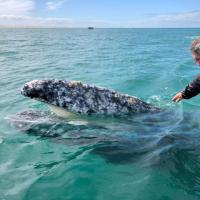The Holbrook Explorer

Back from the Field: Up Close with Whale Sharks and Gray Whales on the Baja Peninsula
Back from the Field: Up Close with Whale Sharks and Gray Whales on the Baja Peninsula
Holbrook’s Stefanie Plein and her husband traveled earlier this month to Mexico’s southern Baja Peninsula. With her background in marine science, swimming with the whale sharks and seeing gray whales up-close were high on her wish list. Traveling during COVID-19 presented a few extra obstacles but did not detract from what turned out to be a memorable life experience. Here, Stefanie shares some of the highlights and photos from their trip.
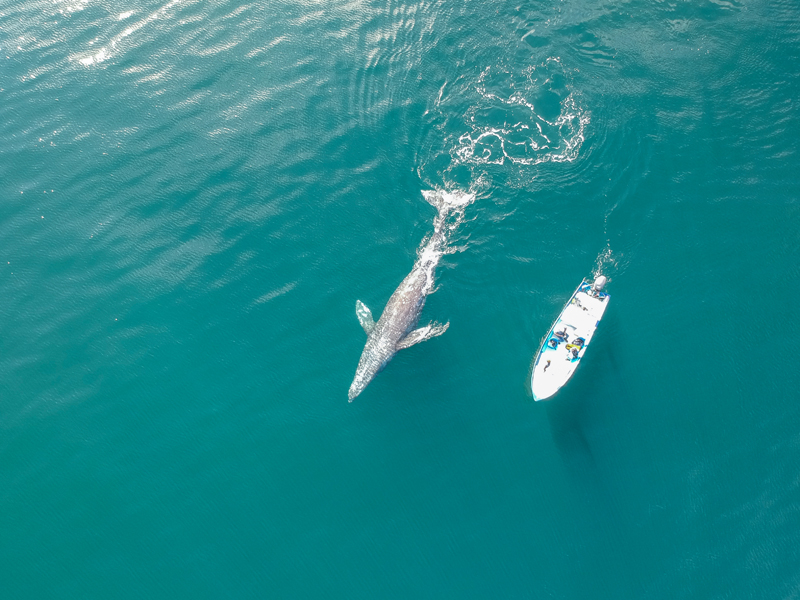
Gray whales & whale sharks
Stefanie and her husband had considered visiting Baja for many years, and after some friends raved about their own experience there, they started doing more serious research. Knowing that February and March are the prime time to see the gray whales, they decided to go for it.
“It was incredible! The gray whales were really friendly, coming right up to the boat,” says Stefanie. “They would kind of play games where they'd go under the boat and they'd pop up, and they would sit there and let us touch them and then go back down. It was a really intimate experience.”

To see the whales, Stefanie and her husband stayed at a whale camp on an island in Magdalena Bay, near a small fishing village of about 100 people. The camp was isolated, with a dozen or so comfortable tents. Over the next two days, they went out on morning and afternoon excursions to look for the gray whales, which migrate to the waters around Baja each year to court, mate, and give birth to their young.
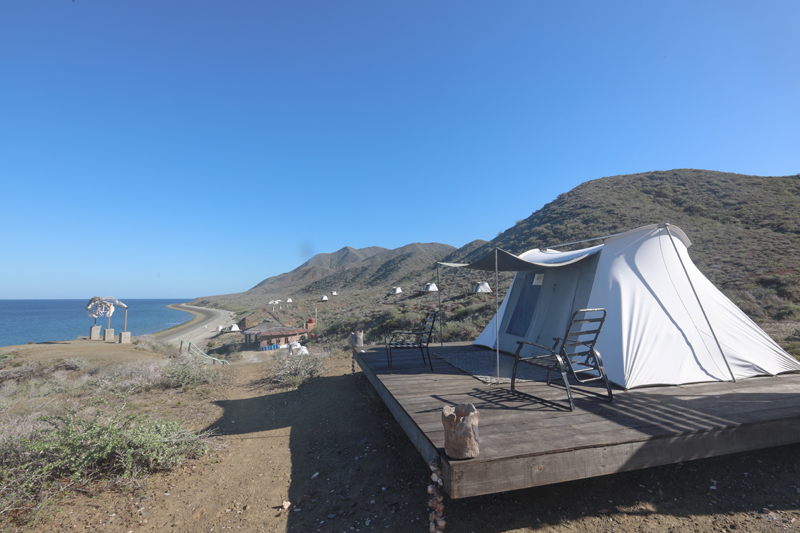
There were plenty of other activities to enjoy as well, like paddleboarding, kayaking, walking on the beach, and looking for seashells. The water here is rich with nutrients and an abundance of fish, leading to a wealth of marine life. “At sunset, we saw a bunch of whales out there on the Pacific side. When you're at the whale camp, you can see whales outside your window, along with dolphins and sea lions.”
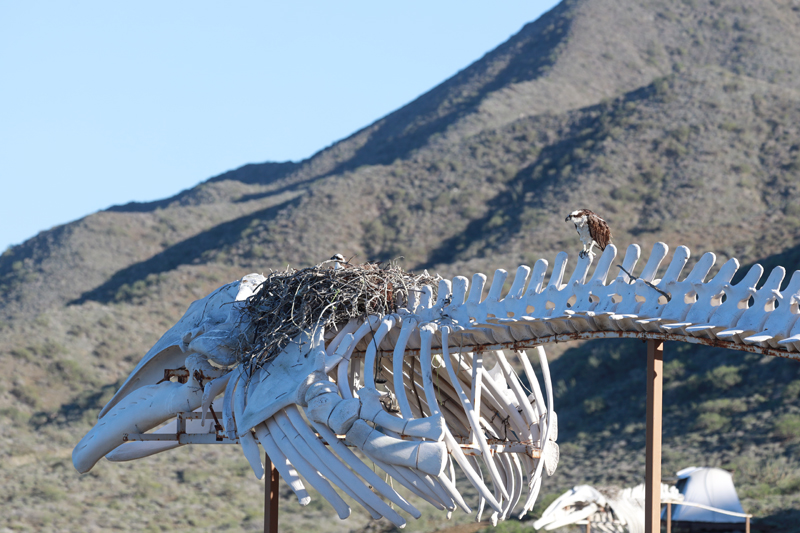
The couple also got to swim and snorkel with whale sharks in the Gulf of California near La Paz. “It was our first time seeing whale sharks and one of the reasons that we went here. It was a wonderful experience,” she says. While in La Paz, they also snorkeled with sea lions and enjoyed a stop for lunch at a beautiful beach with crystal-clear water and desert-like sand dunes.
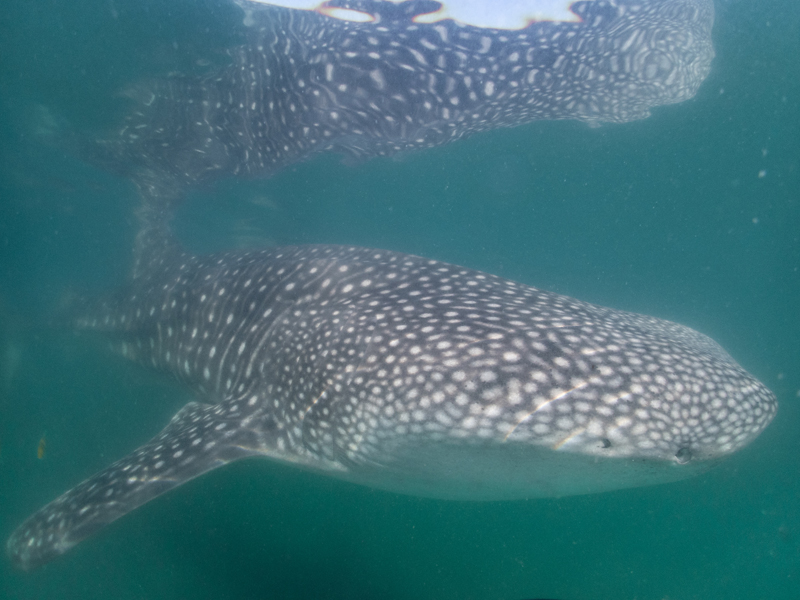
Responsible interactions
“As someone who is really interested in marine ecology and conservation, when I travel I want to make sure that I'm not contributing to a problem of animal harassment,” Stefanie says.
Prior to the whale shark experience, they were briefed on the guidelines to ensure the sharks were not disturbed. In addition to being accompanied by a guide, there were restrictions on how fast the boats could go, the number of people allowed in the water at once, and how close they could get to the animals.

“I felt with the whale shark experience that it was really well regulated and I saw nothing but respect. Also, with the gray whales, they were very respectful,” she says. In order to protect the gray whales, visitors are not allowed to get in the water with them; all interactions are from the boat, and the whales must choose to initiate the interaction. “Our captain, Miguel, would approach the whales very slowly. You could tell that he loved the whales,” she says.
A worthwhile experience
“I would put this high on your list because it's so unique,” says Stefanie. You can be swimming with whale sharks and sea lions one day, and then the next day, you're interacting with gray whales—incredible! I don't think there's anywhere else in the world where whales are known to seek out that human interaction like they do in in the lagoons in Baja.”

Another memorable aspect, she says, was the warmth of the local people. Because COVID-19 has taken a toll on the tourism industry in Mexico, everyone was friendly and appreciative of their visit. “We were generous with tips as we wanted to help them out, knowing that they've lost a lot of income from people not traveling. Multiple times, people would say, ‘Thank you for coming.’”
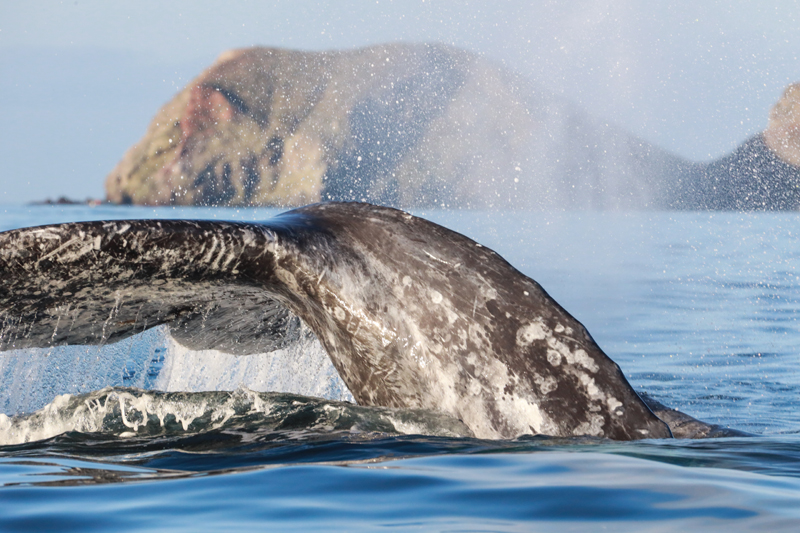
COVID-19 precautions
While Baja was much quieter than it usually is at this time of year, the couple was able to enjoy all the activities they had set out to do, and felt “incredibly safe” the entire time. She notes that mask wearing was required and universally observed, and throughout their trip they encountered frequent temperature checks, hand sanitizing stations, and other precautions. “We didn't see anyone not following the rules,” she says. “We were also trying to be super cautious, because we wanted to protect not just ourselves but also the communities we were going to visit.”
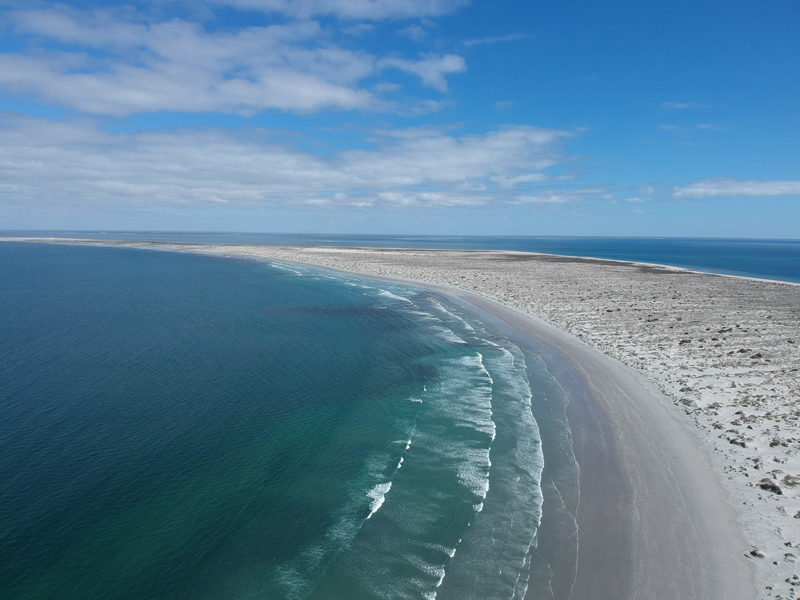
Their biggest concern was the U.S.’s newly implemented rule that travelers must provide a negative COVID-19 test prior to re-entry, but she says the entire process went smoothly. They were able to take the test at their resort in La Paz, received an email with verification within a few hours, and showed it at the La Paz Airport without incident.
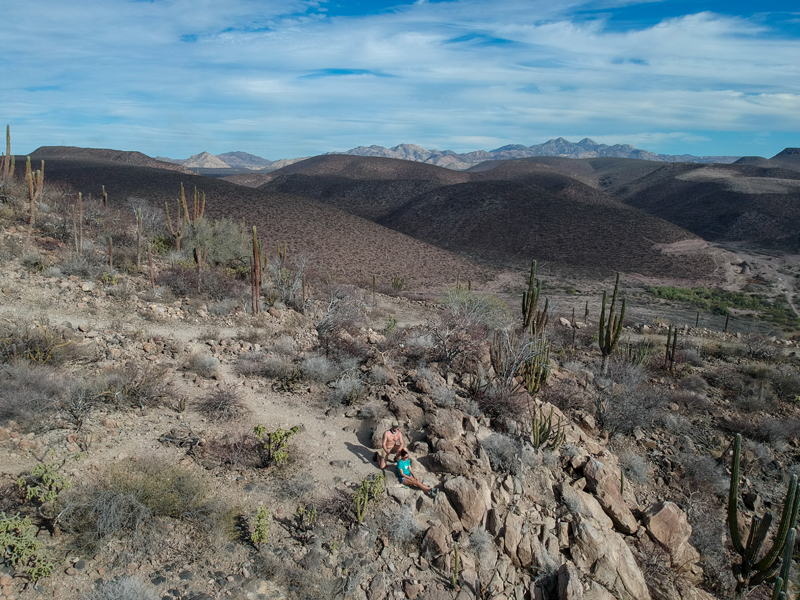
Reflections on traveling now
Certainly, traveling now brings a unique set of challenges. “I think that it's a deeply personal choice, whether you're going to travel or not,” Stefanie says. After more than a year without travel, the couple felt ready to start exploring again; they decided Mexico was a good option because it was closer to home and the necessary precautions were in place.

“We wanted to accomplish a bucket list trip, because we felt last year, so many trips that we had planned didn't happen. We wanted to go into 2021 with a big bang and do a nice trip. But again, we felt safe the entire time. I think it's still a deeply personal choice, but I feel like it is okay to go out and start traveling as long as you're safe and following the rules and taking precautions.”

All photos by Stefanie Plein


